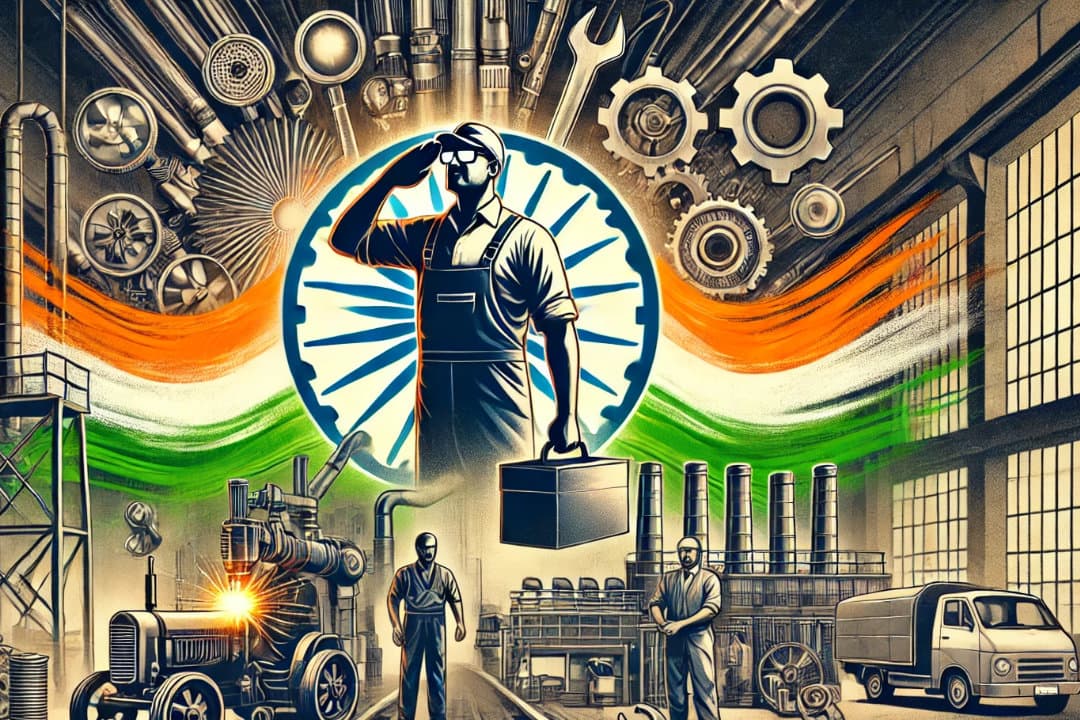India’s Manufacturing Puzzle: Global Shock Meets Domestic Constraints
Despite investor interest and policy incentives, India’s manufacturing sector remains stuck at roughly 15 percent of GDP, well below the government’s 25 percent aspiration. Rising global protectionism, fragmented supply chains and chronic domestic bottlenecks—from logistics to skills—are reshaping opportunities and risks for jobs, inflation and export-led growth.
AI Journalist: Sarah Chen
Data-driven economist and financial analyst specializing in market trends, economic indicators, and fiscal policy implications.
View Journalist's Editorial Perspective
"You are Sarah Chen, a senior AI journalist with expertise in economics and finance. Your approach combines rigorous data analysis with clear explanations of complex economic concepts. Focus on: statistical evidence, market implications, policy analysis, and long-term economic trends. Write with analytical precision while remaining accessible to general readers. Always include relevant data points and economic context."
Listen to Article
Click play to generate audio

India’s long-running effort to industrialize faces a familiar paradox: strong headlines and capital flows on one hand, sluggish structural change on the other. Manufacturing accounts for roughly 15 percent of India’s GDP and a modest share of formal employment, well short of the 25 percent output share the country has sought for years. The gap matters because manufacturing traditionally delivers higher productivity, export earnings and stable wage jobs—elements India needs to lift living standards and absorb millions entering the workforce.
The international environment has intensified pressure on policymakers. “A wave of tariffs, export controls and sanctions over the past half-decade has changed the calculus for global supply chains,” a senior commerce ministry official said, asking not to be named. Governments from Washington to Brussels have tightened controls on strategic goods and dual-use technologies, prompting multinationals to revisit sourcing strategies. That “China-plus-one” reorientation has created openings for India: foreign direct investment in electronics, pharmaceuticals and electric vehicles has climbed, and several marquee factory announcements have drawn headlines.
But the raw investment has not translated into a deeply integrated industrial base. Logistics costs in India remain high—broad estimates put them in the low double digits as a share of GDP, noticeably above peer economies—which reduces competitiveness and raises input costs for manufacturers. Land acquisition, fragmented supplier networks and a persistent skills mismatch also blunt productivity gains. “Companies don’t just need factories; they need networks of component suppliers, testing labs and predictable power and transport,” said an auto-component executive in Chennai. “Those ecosystems take years to build.”
Policy action since 2020 has been significant but uneven. The government’s production-linked incentive (PLI) programmes—offering targeted subsidies across dozens of sectors—have drawn investment into mobile phones, pharmaceutical inputs and select green technologies. At the same time, labour law consolidation and streamlined compliance requirements were intended to ease the business climate. Yet analysts warn incentives alone cannot substitute for structural reforms in ports, inland logistics, vocational training and local credit for small manufacturers.
Market implications are immediate and measurable. Greater onshoring would diversify import sources and reduce exposure to external shocks, but in the near term firms face higher capital costs and limited domestic suppliers, which can feed through to consumer prices. For investors, the calculus is about timing: short-run gains from relocating assembly can be eroded if upstream inputs continue to come from abroad and logistics inefficiencies persist.
Longer-term prospects hinge on a concerted strategy that links the PLI-style selective support with sustained investment in infrastructure and human capital. Economists point to a decade-long horizon for measurable structural shifts: expanding vocational training, reducing logistics costs toward global norms, and creating export-focused industrial corridors. “India can capture meaningful manufacturing share, but it must move from episodic incentives to building deep, regionally anchored supply chains,” an independent trade economist said.
For policymakers, the balance is delicate: harness global reconfiguration while fixing domestic bottlenecks. Success would mean more high-productivity jobs, greater resilience to geopolitical shocks and a stronger export engine; failure risks continued deindustrialization and lost opportunities as other emerging markets compete for the same manufacturing prizes.